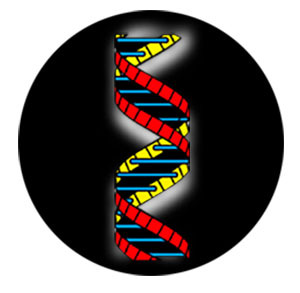
MENU

DNA
The study of living organisms and the discovery of DNA, “a super-molecule which stores coded hereditary information,” have radically changed man’s view of life.1 We now know that living things are vastly more complex than anyone ever dreamed 150 years ago when the Theory of Evolution was being formulated. As evolutionists have gradually discovered the incredible complexity of life, they have also frequently felt the need to increase the number of years during which they suppose life might have evolved. Millions of years turned into billions of years. Now some scientists recognize that billions upon billions of years would not be enough time for the complex life systems we see today to have developed due to random chance processes.
“An article in the journal Nature reported Sir Fred Hoyle’s statements at the Kellogg Laboratory Symposium explaining why he does not believe conventional views about evolution . . . ‘The likelihood of the formation of life from inanimate matter is one to a number with 40,000 noughts after it . . . It is big enough to bury Darwin and the whole theory of evolution.’”2
I. L. Cohen, in his 1984 book, Darwin Was Wrong—A Study in Probabilities, says, “At that moment, when the RNA/DNA system became understood, the debate between evolutionists and creationists should have come to a screeching halt . . . Based on probability concepts, there is no possibility that [macroevolution produced all of the living things we see today].”3
THE SETI PROGRAM
For a number of years NASA has been involved in a program called SETI, which stands for Search For Extra-Terrestrial Intelligence. NASA scientists are scanning the skies with radiotelescopes searching for intelligent life in space. Up to this time, the radiotelescopes have picked up only random, unorganized sounds or static. But the logic behind the program is this: If sounds with a complex pattern are ever detected, then it will be reasonable to assume the source must be intelligent. The late evolutionary spokesman Carl Sagan once said, “The receipt of a single message from space would be enough to know there’s an intelligence out there.”4 In the movie Contact, which portrayed the hopes of every SETI enthusiast, a list of prime numbers was received from space. Because prime numbers are numbers divisible only by themselves and one, the scientists concluded that this message had enough informational content to assure them the source was intelligent. I think most people would agree this is a reasonable assumption!
However, even though the informational content in every cell of the human body is greater than all thirty volumes of the Encyclopedia Britannica, the Darwinian evolutionist insists that the source of DNA could not possibly be intelligent!

“. . . Based on probability concepts, there is no possibility that [macroevolution occurred].”
I. L. Cohen
- Taylor, Paul S. The Illustrated Origins Answer Book (Mesa, Arizona: Films For Christ Association, 1989), p. 23.
- Ibid., p. 78.
- Ibid., p. 24.
- Carl Sagan, Broca’s Brain (New York, NY: Random House, 1979), p. 275, as quoted in Strobel, Lee. The Case for Faith. Grand Rapids, MI: Zondervan Publishing House, 2000, p. 110.
Design, graphics and artwork copyright © 2016 Tim Beasley • All rights reserved.